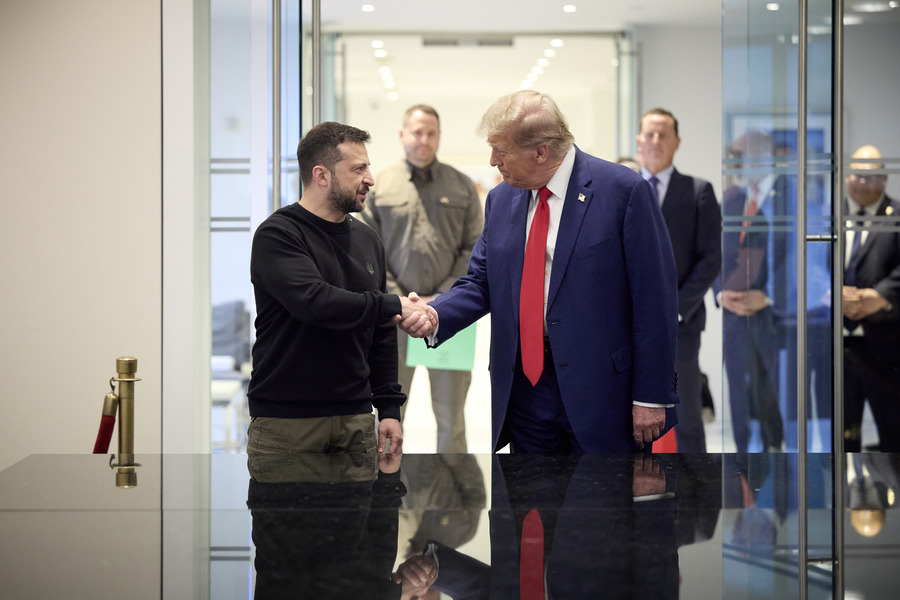Is (or Was) Ukraine in a Non-International Armed Conflict?
Published by The Lawfare Institute
in Cooperation With

In the wake of Thursday’s violence, many press reports began to state that the violence in Ukraine was heading toward---or constituted---a civil war. See here, here, and here. The press was using this term in the colloquial sense, not the legal sense. But it’s worth asking the legal question: Is (or was) Ukraine already in a non-international armed conflict (NIAC)? Protestors and the Yanukovich government struck a deal overnight. With any luck, the violence will cease and this post will never prove relevant. But the issue is worth thinking about, given how quickly the last truce broke down.
Although the question of whether a situation is a NIAC is highly fact-specific and involves the application of legal concepts that remain under-defined, the answer in Ukraine seems to be no. As of yesterday, the situation appeared to be a slow-motion example of violence that easily could shift from protests and riots into a NIAC---though, of course, the protestors and the Government may have just taken steps to alter the course of events.
As many readers are aware, two main bodies of treaty law regulate the conduct of hostilities in NIACs. The first is Common Article 3 of the Geneva Conventions. The second is Additional Protocol II to the Geneva Conventions. Common Article 3 is more readily triggered and, by virtue of its status as customary international law, applies in all situations of NIAC. AP II adheres only when the state in the armed conflict is a party to the treaty and only once additional factors are met.
Has the violence in Ukraine risen to the level of a NIAC in the Common Article 3 sense? Although the Geneva Conventions nowhere define what constitutes an “armed conflict,” Jean Pictet’s Commentary on Common Article 3 lists a number of “convenient criteria” to help assess when violence rises to the level of a NIAC. These criteria include whether “the Party in revolt against the de jure Government possesses an
organized military force, an authority responsible for its acts, acting within a determinate territory and having the means of
respecting and ensuring respect for the Convention”; whether the dispute has been discussed in the Security Council or General Assembly as a threat to the peace, breach of the peace, or act of aggression; and whether the insurgents have an organization purporting to have the characteristics of a state. Based on these factors and others that Pictet lists, the protests in Ukraine do not seem to constitute an armed conflict. Instead, the violence (as of now) seems more like “an unorganized and short-lived insurrection,” to which the laws of armed conflict would not apply.
Nor does the application of the Tadic case’s widely-accepted test for whether situations of violence constitute armed conflicts alter that conclusion. The Tadic test requires us to examine the magnitude of the hostilities that are transpiring and the level of organization of the non-state group(s) engaged in the violence. In the view of the ICRC, “First, the hostilities must reach a minimum level of intensity. This may be the case, for example, when the hostilities are of a collective character or when the government is obliged to use military force against the insurgents, instead of mere police forces. Second, non-governmental groups involved in the conflict must be considered ‘parties to the conflict,’ meaning that they possess organized armed forces. This means for example that these forces have to be under a certain command structure and have the capacity to sustain military operations.”
It is not clear precisely what “minimum level of intensity” constitutes a sufficient amount of violence to be deemed an armed conflict. The Tadic court spoke of “protracted” violence, although that concept, too, is somewhat abstract. Others look for activity that constitutes “more than internal disturbances and tensions, such as riots [and] isolated and sporadic acts of violence.” Up to one hundred protestors and three policemen reportedly were killed in Kiev yesterday, with hundreds injured. Protestors also reportedly took seventy policemen hostage. And yesterday’s clashes were not the first: on January 22 and February 18, government forces and protestors also clashed and several protestors died on each occasion. The Government reported that 195 police were injured during the January incidents. Notwithstanding these deaths and injuries, many would conclude that the quantum of violence in Ukraine has not yet risen to the level of an armed conflict, given the relatively short period of time in which the protestors and Government have engaged each other using weaponry.
Tadic also prompts us to ask, “Is an organized armed group doing the fighting?” The protestors confronting President Yanukovich’s government are a collection of pro-EU liberals and right wing nationalists. Yanukovich himself has called them “organized gangs of protestors.” However, a report yesterday from the BBC raises questions about whether the protestors may be thought of collectively as an organized armed group. The BBC notes, “The leaders of the three opposition parties in parliament . . . have been on the Maidan, attempting to direct the protests and trying to present a united front. But these leaders appear not to enjoy the full trust of many protesters. The Fatherland party, in particular, is tainted by its recent years in government and seen by some as part of the political establishment. Some radical right-wing groups, like Right Sector and Common Cause, have been at the forefront of clashes with police, though it is not clear how much support they have.” If the opposition’s leadership is diffuse or muddled, some undoubtedly will conclude that the individuals fighting the government do not meet the Tadic “organization” test.
Additional factors are relevant to the armed conflict inquiry, including some listed in Pictet’s Commentary on Common Article 3: Has the government felt compelled to use its regular armed forces (that is, military units trained and equipped primarily for combat operations, and not police missions) to respond to the violence? (Yanukovich has not formally called out the military, but people on the ground feared that he intended to do so.) What types of weapons is each side using? (In Ukraine, protestors were using petrol bombs and paving stones, and possibly also shotguns. Police were issued combat weapons, including automatic and sniper rifles.) Does the non-state group have the capacity to transmit orders, plan and launch coordinated military operations, and train and equip new fighters? (Notwithstanding the BBC’s assessment of the protest leadership, a Bloomberg reporter says that the protestors are organized, and have been able to bring supplies to the front line and import people willing to join the fight.) These additional factors seem to suggest that the situation on the ground quickly could slip into an armed conflict in the legal sense if the protestors return to violence and increase their level of organizational sophistication and quality of weaponry.
Given that it is unlikely that the situation in Ukraine qualifies as an armed conflict within the meaning of Common Article 3, it is premature to ask whether the conflict meets the higher Additional Protocol II threshold. Ukraine became a party to AP II in 1990. Its treaty obligations will be triggered if the situation becomes an armed conflict that takes place between Ukraine’s armed forces and “dissident armed forces or other organized armed groups which, under responsible command, exercise such control over a part of its territory as to enable them to carry out sustained and concerted military operations and to implement this Protocol.” Though this does not seem to describe the current situation, the regional assembly in the western city of Lviv has declared autonomy from Yanukovich and his administration, and opposition members there captured the armory of a garrison of the Ministry of Interior. If the central government backs away from today’s deal and tries to reclaim Lviv by force, AP II might prove relevant.
If the situation in Ukraine is or becomes a NIAC, what are the implications? The government must protect people who are taking no active part in the hostilities; it must conduct its targeting consistent with the rules of distinction and proportionality; and it must treat detainees humanely. On the other hand, the law of armed conflict also anticipates that the state will target those who take direct part in hostilities. According to the traditional interpretation of the law of armed conflict, the state need not try first to capture those engaged in hostilities. The shift from a law enforcement paradigm – even one modified by a “state of emergency” – to an armed conflict paradigm thus imposes certain international legal obligations on the Ukrainian government, but by definition envisions and even accepts ramped-up levels of death and destruction. Let’s hope that today’s deal forecloses that shift.
Ashley Deeks is the Class of 1948 Professor of Scholarly Research in Law at the University of Virginia Law School and a Faculty Senior Fellow at the Miller Center. She serves on the State Department’s Advisory Committee on International Law. In 2021-22 she worked as the Deputy Legal Advisor at the National Security Council. She graduated from the University of Chicago Law School and clerked on the Third Circuit.


.jpg?sfvrsn=d5e57b75_5)

